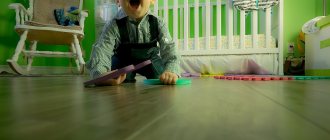24.09.2021
Dyslexia and dysgraphia are commonly understood as partial disorders of reading and writing processes. But in relation to children of primary school age, it is more correct to talk not about the disorder, but about the difficulties of mastering written language.
These difficulties usually manifest themselves in a complex and are expressed in the presence of persistent specific errors that cannot be explained by the level of intellectual development of the child, physiological pathologies of hearing or vision, or irregular schooling.
As a rule, reading and writing disorders are caused by a delay in the formation of certain functional systems that are necessary for the development of written speech. Also, some researchers (A. Luria, S. Lyapidevsky, S. Blinkov) note that dyslexia and dysgraphia occur with organic speech disorders. B. Hallgren and M. Roudinesco write in their works about a hereditary predisposition to dyslexia: qualitative immaturity of individual brain structures involved in the organization of written speech can be passed on from mother to child.
By the way, scientists wrote back in the 20s that dyslexia is inherited. last century. You can read about this in the first part of this material, which talks about the history of dyslexia research.
However, already in the mid-1990s. A larger number of studies have appeared, which prove that one of the causes of dyslexia and dysgraphia is functional asymmetry in the activity of paired sensorimotor organs. In other words, the child has not established the dominant role of one of the cerebral hemispheres (it should be noted that in order to successfully master the skills of reading and writing, the left hemisphere of the brain must dominate).
The lack of dominance of the left hemisphere of the brain leads to disorders not only of speech development, but also to problems of control over many other activities.
A significant number of children with reading and writing disorders have insufficient auditory-motor coordination, a sense of rhythm, and undeveloped voluntary motor skills.
It is important to note here that children with a clear dominance of one of the brain hemispheres, no matter whether the child is left-handed or right-handed, have the so-called. “strong points” (terminology proposed by N. Granjon and J. Ajuriaguerre), important for his constructive actions. Children with a lack of dominance of the cerebral hemisphere lose these “points”, as a result of which they experience difficulties with reading and writing.
It should be noted that all researchers are confident: every case where dyslexia and dysgraphia are combined with mental disability, hearing loss or vision loss requires careful diagnosis. And only after it can a specific diagnosis be made!
Affective disorders
These are mood disorders, that is, various disorders of the psycho-emotional state. Their connection with dyslexia was carefully studied by Aubry-Roudinesco, who even established a new pathogenetic type of dyslexia. Its peculiarity is that the leading ones are affective disorders.
And this is an absolutely correct statement, since affectivity (from affect - an emotional process of an explosive nature, which is characterized by short duration and high intensity) is one of the key drivers of the entire mental life of a child. Therefore, with dyslexia, it is extremely important to ensure a normal psycho-emotional state of the child, to create for him at least a calm atmosphere at home.
It should be remembered that dyslexic children are capable of “exploding” over any little thing. And any violation of their psycho-emotional state always negatively affects learning and, in particular, the development of reading and writing skills.
What is dysgraphia?
Primary school teachers know from their work experience that there may be up to 30% of students in a class who have various writing disorders. The process of writing, which is automatic in an adult, causes many problems in a child. Writing is a complex form of speech activity, a multi-level process. It involves speech-auditory, speech-motor, visual, and general motor analyzers. A close connection is established between them in the process of writing. Writing is closely related to oral speech and the degree of its development. It is based on the ability to distinguish speech sounds, isolate them in the flow of speech and connect them, pronounce them correctly. To write a word, a child needs:
- determine its sound structure, sequence and place of each sound;
- correlate the highlighted sound with a certain image of the letter;
- reproduce the letter using hand movements.
To write a sentence, you need to mentally build it, speak it, maintain the required writing order, break the sentence into its constituent words, and mark the boundaries of each word.
If a child has impairments in at least one of these functions: auditory differentiation of sounds, their correct pronunciation, sound analysis and synthesis, lexico-grammatical side of speech, visual analysis and synthesis, spatial representations, then a disruption in the process of mastering writing may occur - dysgraphia ( from the Greek "grapho" - writing). Dysgraphia is a specific disorder of written speech, manifested in numerous typical errors of a persistent nature and caused by the immaturity of higher mental functions involved in the process of mastering writing skills. How to determine whether a child needs help from a speech therapist? And if, due to various circumstances, there is no specialist and a teacher or parent cannot receive qualified advice. How to help a child in this situation? First, it is necessary that the primary school teacher (parent) knows which errors are specific, dysgraphic.
The mother-child connection
Why is the mother not just a spectator in the “Successful Start” dyslexia correction course, but actively involved in the correction process? This is explained by the fact that the course provides her with recommendations on harmonizing relationships in the family. She is the one who masters self-help skills for dyslexia and literally learns how to interact with her child again.
There is a scientific basis for this.
Thus, the research group of the Claparède Institute back in the early 1990s. It has been found that the basis of dyslexia is often a negative connection between mother and child. Their relationship is most often based on conflict. For example, a mother forcibly feeds her child, as a result he begins to resist her and gradually transfers this manner to other areas of life. And this manifests itself, first of all, in training. Moreover, the child uses the developed model of behavior in relations with the teacher, as a result of which pedagogical efforts do not have any result.
Dyslexia as a partial specific disorder of the reading process
WRITING SPEECH DISORDERS AND THEIR OVERCOMING IN JUNIOR SCHOOLCHILDREN
Written speech disorders are divided into two groups depending on the type of impairment. If the productive type is impaired, writing disorders are noted, and if receptive writing activity is impaired, reading disorders are noted.
1. Dyslexia is a partial specific disorder of the reading process. Manifests itself in difficulties in identifying and recognizing letters; in difficulties merging letters into syllables and syllables into words, which leads to incorrect reproduction of the sound form of the word; in agrammatism and distorted reading comprehension.
2. Dysgraphia is a partial specific disorder of the writing process. It manifests itself in the instability of the optical-spatial image of the letter, in mixing or omission of letters, in distortions of the sound-syllable composition of the word and the structure of sentences.
In the classroom, it is recommended, based on the results of the diagnosis, to implement a system of correctional education to overcome written speech disorders. Classes to overcome dysgraphia should not turn into an endless process of writing or rewriting. It is necessary to provide varied speech practice for students - to develop language ability and observation, to develop speech communication skills. For these purposes, there are various exercises, most of which are performed orally with a clearly organized system of feedback signals (cards, symbols, numbers, actions with a ball and clapping, etc.), that is, to some extent we form writing operations without notebook and pen. Entertaining speech material should also help relieve tension and fear of writing in children who feel their own inadequacy in grapho-lexical activity, and create a positive emotional mood in children during the lesson.
Written speech is one of the forms of language existence, opposed to oral speech. This is a secondary, later in time form of the existence of language. For various forms of linguistic activity, both oral and written speech can be primary (compare folklore and fiction). If oral speech separated man from the animal world, then writing should be considered the greatest of all inventions created by mankind. Written speech not only revolutionized the methods of accumulating, transmitting and processing information, but it changed man himself, especially his ability to think abstractly.
The concept of written speech includes reading and writing as equal components. “Writing is a symbolic system for recording speech, which allows, with the help of graphic elements, to transmit information at a distance and consolidate it in time. Any writing system is characterized by a constant composition of characters.”
Russian writing refers to alphabetic writing systems. The alphabet marked the transition to symbols of higher orders and determined progress in the development of abstract thinking, making it possible to make speech and thinking objects of knowledge. “Only writing allows one to go beyond the limited spatial and temporal framework of speech communication, as well as preserve the impact of speech even in the absence of one of the partners. This is how the historical dimension of public self-awareness arises.”
Both oral and written forms of speech are a type of temporary connections of the second signaling system, but, unlike oral, written speech is formed only under conditions of purposeful learning, i.e. its mechanisms develop during the period of learning to read and write and are improved during all further education. As a result of reflex repetition, a dynamic stereotype of a word is formed in the unity of acoustic, optical and kinesthetic stimuli (L. S. Vygotsky, B. G. Ananyev). Mastering written language is the establishment of new connections between the audible and spoken word, the visible and written word, because The writing process is ensured by the coordinated work of four analyzers: speech-motor, speech-auditory, visual and motor.
A.R. Luria defined reading as a special form of impressive speech, and writing as a special form of expressive speech, noting that writing (in any of its forms) begins with a specific plan, the preservation of which helps to inhibit all extraneous tendencies (running ahead, repetitions, etc. The letter itself includes a number of special operations:
· Analysis of the sound composition of the word to be recorded. The first condition of writing is determining the sequence of sounds in a word. The second is clarification of sounds, i.e. transformation of currently heard sound options into clear generalized speech sounds - phonemes. At first, both of these processes occur completely consciously; later they become automated. Acoustic analysis and synthesis proceed with the closest participation of articulation;
· Translation of phonemes (audible sounds) into graphemes, i.e. into visual schemes of graphic signs, taking into account the spatial arrangement of their elements;
· “re-encoding” the visual patterns of letters into a kinetic system of sequential movements necessary for writing (graphemes are translated into kinemes).
Recoding is carried out in the tertiary zones of the cerebral cortex (parieto-temporo-occipital region). Morphologically, the tertiary zones are finally formed in the 10th - 11th year of life. The motivational level of writing is provided by the frontal lobes of the cerebral cortex. Their inclusion in a functional writing system ensures the creation of an idea that is retained through internal speech.
Retention of information in memory is ensured by the integral activity of the brain. As noted by A.R. Luria, “the proportion of each of the writing operations does not remain constant at different stages of motor skill development. At the first stages, the writer’s main attention is directed to the sound analysis of the word, and sometimes to the search for the desired grapheme. In the established writing skill, these moments recede into the background. When writing well-automated words, writing turns into smooth, kinetic stereotypes.”
4.1 TYPES OF WRITING IN CORRECTIONAL WORK
During the first three years of study, schoolchildren practice various types of writing, each of which has a certain significance for the formation of full-fledged written speech skills, meeting the objectives of learning, consolidating and testing relevant knowledge and skills. Let us consider certain types of writing, refracted in relation to the tasks of correctional work.
Copying: a) from handwritten text, b) from printed text, c) complicated by tasks of a logical and grammatical nature.
Cheating, as the simplest type of writing, is most accessible to children suffering from dysgraphia. Its value lies in the ability to coordinate the pace of reading recorded material, pronouncing it and writing it with the individual capabilities of children. It is necessary as early as possible to teach children to remember the syllable, and not the letter, when copying, which follows from the provision about the syllable as the basic unit of pronunciation and reading. Consequently, the specific task of writing becomes correct syllable-by-syllable pronunciation, consistent with the tempo of writing.
In cases where a child poorly assimilates this requirement and allows numerous omissions of letters, it is useful to offer for copying words and texts already divided into syllables by dashes.
From the first exercises in cheating, it is advisable to develop self-testing skills in students, for which the teacher, while looking at the work, does not correct errors, but only notes them in the margins of the corresponding lines, inviting the student to check his notes with the text of the textbook, card, or board.
In all types of writing, reading performs a control function.
Auditory dictation with visual self-control meets the principle of interaction between the analyzers involved in the act of writing. After writing the auditory dictation, walking around the students, the teacher notes and announces the number of mistakes of each student. The dictation text written on the board is opened for a few minutes to correct errors. Students make corrections not with a pen, but with a colored pencil, in order to distinguish them from corrections that may have taken place during the writing of the dictation. When checking the work, the teacher notes the number of corrected errors, writing this number in the form of a fraction: 5/3, that is, out of five mistakes made, three were corrected. Such tasks gradually accustom children to re-reading and checking what they write. By keeping records of errors, the teacher can assess the dynamics in the development of this skill.
Selecting speech material for auditory dictation for children with mental retardation and dysgraphia is not an easy task, since even the simplest text may contain something inaccessible to students at this stage of education.
This circumstance became the reason for the development of a new, unconventional form of writing under auditory dictation - graphic dictation. This form most fully meets the task of testing children’s mastery of the topics covered in differentiating mixed pairs of phonemes, that is, topics that make up a significant part of the total volume of speech therapy work in the correction of dysgraphia.
Graphic dictation performs a control function, but is a gentle form of control, since it excludes other spellings from children’s field of view. Testing the assimilation of what has been learned takes place under simplified conditions, and therefore is not the last stage of control, like a regular text dictation, where the student is faced with many tasks at the same time. However, it is graphic dictation that allows students to train students in distinguishing mixed sounds on words with complex sound composition that cannot be included in text dictations. Here, as it were, the child’s “ray of attention” narrows, concentrating on two mixed sounds, which he must isolate from a rich sound range (word, phrase, text).
The graphic dictation is carried out as follows.
Children are given the task of identifying by hearing only the sounds being studied, for example, voiced z and voiceless s (cases of deafening of a voiced consonant are not included in the text at this stage). Words that do not contain the indicated sounds are indicated by a dash when written; containing one of the sounds are indicated by one corresponding letter; containing both sounds - two letters in the sequence in which they appear in words. If one of the sounds is repeated twice in a word, then the letter is repeated twice. Thus, the dictated phrase: “There is a resinous smell in the pine forest” - in the recording it looks like this: “- ss ss s”.
During graphic dictation, you should pronounce the words of the phrase separately. When listening for the first time, students bend their fingers according to the number of words. When reading again, write down, checking the number of written notations with the number of words in the sentence. Each sentence is written on a new line, since such a record does not contain capital letters and periods.
In addition to checking the main topic of the dictation, this type of work allows you to consolidate a number of other writing skills: students perceive by ear and reflect in the recording the division of the text into sentences, sentences into words; learn to identify prepositions. Graphic dictations expand children's vocabulary, while with text recording the choice of words is limited by the complexity of their spelling.
Errors in graphic dictations boil down to the following: omission of a dash word in a sentence; omission of a letter, especially if it occurs 2-3 times in a word. For example, when differentiating vowels i-y:
the word caught is indicated and (instead of ii),
surprised - ii (instead of iii).
Errors of the first type are overcome with the help of a preliminary analysis of the phrase into words, selective naming of the second, fourth, and first words. Students consciously strive to memorize each sentence. The volume of auditory memory increases noticeably. Anyone who has made a second type error when checking a dictation must say the word out loud, “feeling every sound.” The skill of accurate and quick analysis of sound composition based on articulation is gradually improved.
Graphic recording can also be used to reinforce other topics of the remedial course.
Usually children willingly write all graphic dictations. New notations do not cause any difficulties for them, since the principle of notation for different topics is the same.
4.2. DEVELOPMENT AND CLARIFICATION OF SPATIO-TEMPORAL REPRESENTATIONS
The temporal sequence of sounds and syllables that make up a word, as well as the temporal sequence of words that make up a phrase, in writing is reflected in the corresponding spatial sequence of letters, syllables, and words located on the lines of the notebook when writing. Exercises in determining sequence in space and time create the basis for developing sound-syllable and morphemic analysis of words.
The starting point in the development of spatial orientation is children’s awareness of their own body diagram, determination of directions in space, and orientation in the surrounding “small” space. Next, students practice determining the sequence of objects or their images (for example, a series of object pictures depicting fruits, animals, etc.), as well as graphic signs. Such tasks help train the hand and gaze in sequential movement in a given direction.
The next most difficult task is to isolate one of the links in a chain of homogeneous objects, images, graphic signs. Such exercises create the prerequisites for developing a positional analysis of sounds in words.
A peculiar continuation of the development of spatial differentiation is the study of the topic “Prepositions” (those that have a specific spatial meaning).
Clarifying the range of students' temporal representations involves clarifying and activating the corresponding vocabulary, as well as propaedeutics for mastering verb tenses.
Therefore, during the lesson it is necessary to include tasks and exercises that solve specific problems in the formation of spatial and temporal concepts. Here are some examples of relevant tasks.
— Checking and clarifying children’s ideas about the body diagram.
Raise your “main” hand, call it (right).
Raise your other hand, call it (left).
For some children (left-handed) the answers will be the opposite. It is good to consider such cases and note that the names of the hands remain generally accepted, which should be remembered.
According to the teacher's instructions, show, for example, the right eyebrow, left elbow. Children should be exercised until they become confident in their orientation in the scheme of their own body.
Sitting at the table, determine its right and left edges. Raise your hand to those students sitting at the right half of the table. Likewise for those sitting on the left.
Treatment and correction of dyslexia
The traditional method of treating dyslexia is speech therapy correction work. This method involves working to correct all pathologies of speech and non-speech processes.
The method of speech therapy correction depends on the specific form of the disease:
- Optical dyslexia requires work on visuospatial representation, visual synthesis and analysis.
- Tactile involves working on parsing and understanding patterns and developing spatial representation.
- With mnestic memory, it is necessary to develop auditory-verbal and verbal-visual memory.
- With the phonemic form, it is necessary to correct sound pronunciation and form ideas about the sound-letter composition of words.
- Semantic requires the development of syllabic synthesis and vocabulary, and work on the child’s assimilation of grammatical language norms.
- In the agromatic form, work should be done to form grammatical systems.
Related posts:
- Symptoms of Autism Spectrum Disorders (ASD) in Young Children Autism Spectrum Disorders (ASD) manifest themselves in a range of conditions that are characterized by...
- What is chickenpox and why do people only get it once? Chickenpox or varicella is a contagious viral disease characterized by...
- Scarlet fever in children: how does it manifest and how to treat it? Many of us were faced with a serious infectious disease in childhood...
- Adenoids in children and adults Adenoids in children and adults are causes of severe discomfort...
Causes of dyslexia
Numerous studies have established that one of the causes of dyslexia is congenital lesions of the central nervous system, including disturbances of activity and attention (hyperactive children), as well as MMD (Minimal Brain Dysfunction).
The next reason is mental retardation (mental retardation).
A very important causal factor is disturbances in the occipital lobe (responsible for organizing complex processes of visual perception) and parietal lobe (responsible for organizing purposeful movements).
Another reason is General underdevelopment of speech (Motor alalia).
And finally, congenital brain pathology. But with it there is a nonspecific reading disorder.





